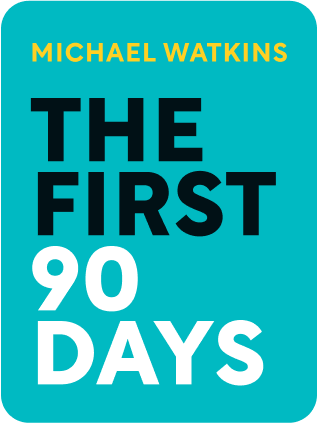

This article is an excerpt from the Shortform book guide to "The First 90 Days" by Michael Watkins. Shortform has the world's best summaries and analyses of books you should be reading.
Like this article? Sign up for a free trial here .
Are all the members of your team performing up to standard? How often do you assess your team’s performance?
Your leadership team can either set you up for a virtuous cycle that informs your long-term successes, or for a vicious cycle that leaves you isolated and without needed support. Therefore, it is critical that you have a robust and comprehensive team evaluation process to make sure everyone on the team is keeping up to the standard.
In this article, we’ll take a look at how to design and execute an effective team evaluation process.
Assessing Your Team
The first 30 days in your new role are an important time to start gathering information about your team members. Some of that will happen organically through first impressions and access to prior performance reviews. However, it’s important not to rely on that information in lieu of a consistent, objective, and formal team evaluation process.
Consider, for example, Liam, who inherited a team when he was appointed to lead a struggling business unit. As he reviewed the team’s previous annual performance evaluations, he began to get the sense that his predecessor had played favorites. Indeed, as he reviewed operating results and evaluated the team himself, it became clear that the performance metrics were not a reliable basis upon which to make personnel decisions. Instead, he opted into creating his own evaluation process which more effectively informed his HR decisions moving forward.
Develop an Effective Team Evaluation Process
Conduct consistent and objective evaluations of your team and develop clear criteria for doing so, such as:
- Competence: What are their technical abilities, background, and experience?
- Judgment: How do they operate under pressure or as part of a team?
- Energy: Are they still excited and engaged? Or lethargic/burnt out?
- Focus: Can they implement reliably? Or are they scattered and off task?
- Relationships: Do they have good rapport with others? Or do they sow tension?
- Trust: Are they reliable and dependable?
Other considerations and resources that might help you develop a consistent and objective evaluation process include:
- Turning to specialists outside of your team who might be able to provide insight into the strength of an employee’s functional expertise (e.g., find support from someone in finance, marketing, or operations who might have knowledge about the capabilities of individuals who play those roles on your team).
- Remembering your organizational structure as you weigh the importance of different criteria. For example, if your team is geographically scattered and operates, by definition, with little integration, perhaps teamwork will be less weighty in your evaluation as compared to competence.
- Using STARS. Different competencies might be more or less important in a given STARS stage. In a turnaround, for example, the urgency of achieving certain tasks will likely influence HR decisions differently than the time that might be available to you for team development in a sustaining success scenario. Prepare for the possibility that some inherited team members may have notable strengths that simply don’t align with the stage the company is in.
- Factoring in the relative importance of different positions for the strategic direction you are pursuing. Perhaps some roles are not particularly critical towards achieving that end and thus a B-level report is sufficient at this time. By contrast, certain roles may be integral to achieving success and thus prioritizing proper placement for that role may be important.
Conduct One-on-One Meetings
As you assess each individual, consider how they perform in the above-discussed metrics but also plan on meeting with them one-by-one. The following steps will help you prepare for and implement these meetings:
1. Do your research first. Review performance evaluations, personnel history, and other appraisals. Develop knowledge about their technical background and experience.
2. Standardize your questions across meetings to include key points of inquiry such as:
- What are the strengths and weaknesses of our current team strategy?
- What are some short term challenges and opportunities that we face?
- What resources could we be leveraging more effectively?
3. During the meeting, observe both verbal and non verbal cues. For example, perhaps the employee has a strong reaction to certain issues or is reticent to take responsibility.
4. Test their judgment by spending sustained time with a given employee and observing whether they have good predictive abilities and can be strategic about preempting possible problems. But you might not be able to do this with every employee. Consider, instead, evaluating an employee’s judgment by asking specific questions about his or her hobbies. For example, who do they think will win an upcoming sports game or a debate? Why? Are they unwilling to opine? Do they have good rationale for their prediction? Were they ultimately right?
Beyond the one-on-one meetings, you’ll also want to evaluate the overall team dynamics and how they function as a unit. There are numerous ways to do so such as:
- By reviewing prior meeting minutes or group reports
- By comparing answers to questions from the individual meetings. Are they identifying shared themes? Or do they lack cohesion?
- By observing group dynamics in meetings to better understand if there are any leaders, or subgroups/cliques, what the tone of communication is, and so on.
Team Review
Once you have completed your team evaluation, review each individual and categorize them as:
- Keep in place—performance is good
- Keep with development—there is some work to be done but it’s manageable
- Move positions—the individual has strengths but they are not being properly utilized
- Replace (low priority)—the individual needs to be replaced but it’s not an urgent priority
- Replace (high priority)—the individual should be replaced ASAP
- Observe—more information is needed
As you categorize each team member, however, always consider alternatives to replacement. Firing people can take a toll on your time and also on the company culture. Additionally, there may be legal requirements, documentation needed to sustain your decision, and so on. Alternatives to firing someone may include: (a) moving her to a new position that will be a better fit or at least less costly to you, (b) minimizing her impact by decreasing responsibilities and tasks—maybe she will leave on her own, or (c) considering whether she could be productive elsewhere in the company (without just making her someone else’s problem).
If you are still observing someone but think they may need to go, begin the process of discreetly identifying a possible replacement through internal options or an external search. And be sure to always maintain a tone of respect with all team members regardless of what category they might fall into.

———End of Preview———
Like what you just read? Read the rest of the world's best book summary and analysis of Michael Watkins's "The First 90 Days" at Shortform .
Here's what you'll find in our full The First 90 Days summary :
- A field guide for anyone undergoing professional transition
- How to develop strong relationships with your new colleagues
- Why early wins are so important






